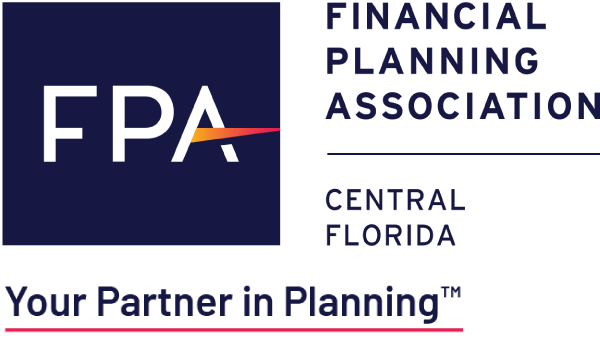
Crystal Ball Gazing: Watch for These Seven Developments and Their Impact on Your Finances
 Here’s what we know: The U.S. economy remains in high gear. Unemployment is near all-time lows. Investors are content as the stock market continues its lengthy run-up. Interest rates have nudged higher, as has the U.S. inflation rate. All against the backdrop of a volatile global political climate.
Here’s what we know: The U.S. economy remains in high gear. Unemployment is near all-time lows. Investors are content as the stock market continues its lengthy run-up. Interest rates have nudged higher, as has the U.S. inflation rate. All against the backdrop of a volatile global political climate.
Which raises the question: What happens with the economy, and with some of the other key factors that tend to influence Americans’ financial well-being and their money decisions, for the rest of 2018 and beyond? While no one knows exactly how the future will unfold, we can at least benefit from a few well-informed predictions about potential market, regulatory, legislative and general money-related developments that could impact peoples' financial lives, boldly offered by financial professionals who keep close tabs on issues like these — presumably without the benefit of tarot cards, Ouija board, palmistry or a magic eight-ball.
- As strong as the U.S. economy and many of its supporting indicators are, it’s still wise to plan for the what-ifs. The recent federal tax cut pushes the next potential recession out, but the Trump Administration’s new tariff policies push it forward, according to Financial Planning Association® (FPA®) member Leon C. LaBrecque, a CERTIFIED FINANCIAL PLANNER™ (CFP®) professional who heads LJPR Financial Advisors in Troy, MI. Meanwhile, some observers say the recent flattening of the yield curve — the spread between short-term and long-term Treasury bond rates is now the tightest it has been since 2007 — is an indication that a recession could be looming.
Amid those conflicting signals, and the strong likelihood, based on historical economic cycles, that the economy will eventually slow and perhaps again crater into recession, LaBrecque recommends that people have a financial plan that accounts for a recession scenario. “What are you going to do [to manage your finances if there is another recession]? In our shop, the recession plan is opportunistic. What will we do when [stock] prices get cheaper? What [investments] will be buy and with what?”
- The stock market is due for a correction in the next few years. What goes up must eventually come down. After several years of unprecedented growth, stock values are bound to soften. With that in mind, says FPA member Scott A Bishop, CFP® with STA Wealth Management in Houston, Texas. “Now is a good time to stress test your [investment] portfolio to see — before the correction — how your portfolio would perform with higher interest rates, a 15%+ market correction and/or a recession/slow down.”
- The U.S. political landscape will shift once again. “Every populist movement has fizzled out in the last 200 years,” observes LaBrecque. “We move into populism about every 70 years, and then move out. Who knows what's next? All the Ouija says is, ‘Things will change, so don't make long-term plans based on current tax and regulatory environments.’”
- Estate and income tax reductions will be sun-setting in 2026 (if not sooner), so take steps now to take advantage of the prevailing lower tax rates. Sure, 2026 seems a long way away. But according to Bishop, “Now is a great time to use lower taxes to do enhanced estate planning (for those with large estates) and to take advantage of lower taxes to fund and/or convert IRAs to Roth IRAs.”
Keep in mind, too, that the new tax act, while scheduled to be effective through the beginning of 2026, is subject to change at any time. So acting when tax rates are relatively low as they are now likely makes sense for some people.
- Higher federal income taxes are a real possibility. “With the national debt/trade deficit at current levels — over $20 trillion in debt and growing — it is very possible that you will pay higher taxes in retirement,” posits Bishop. “I believe everyone should have a ‘tax-smart’ retirement plan” — one that accounts for a higher-income-tax scenario.
- Interest rates and inflation will continue to climb modestly. This isn’t so much a prediction as the fulfillment of the Federal Reserve Bank’s well-publicized strategy to increase rates and loosen its hold on the economic reigns. In announcing its latest rate increase in June, the Fed also disclosed plans for two more increases throughout the remainder of 2018. The goal: raise rates to historically “normal” levels, above 2 percent.
The upshot for consumers: A higher cost to borrow money (mortgages and other loans), higher rates of return on fixed accounts (CDs, savings and money market accounts, fixed annuities, etc.), and higher interest rates on credit card balances. As for the inflation rate, in a recent CNBC poll of economists, fund managers and strategists, year-over-year inflation is forecast to hit 2.45 percent this year.
- The federal government could get more involved in helping consumers find a more financially secure retirement. Long discussed but never adopted into law, proposals that would create new guaranteed retirement income options for consumers have again resurfaced in the U.S. Congress. That includes the bipartisan Retirement Enhancement and Savings Act (RESA) sponsored by Sens. Orrin Hatch (R-Utah) and Ron Wyden (D-Oregon). Among other things, the bill would make it easier for employees to convert lump sums inside their retirement plans into a lifetime income stream, and give small employers more latitude to band together to offer 401(k)-type plans. Meanwhile, there’s talk of a new Republican-sponsored tax package that would include incentives for people to set aside more for retirement. While details on that package are sketchy, expect a renewed push for retirement savings and income incentives later in 2018, into 2019.

